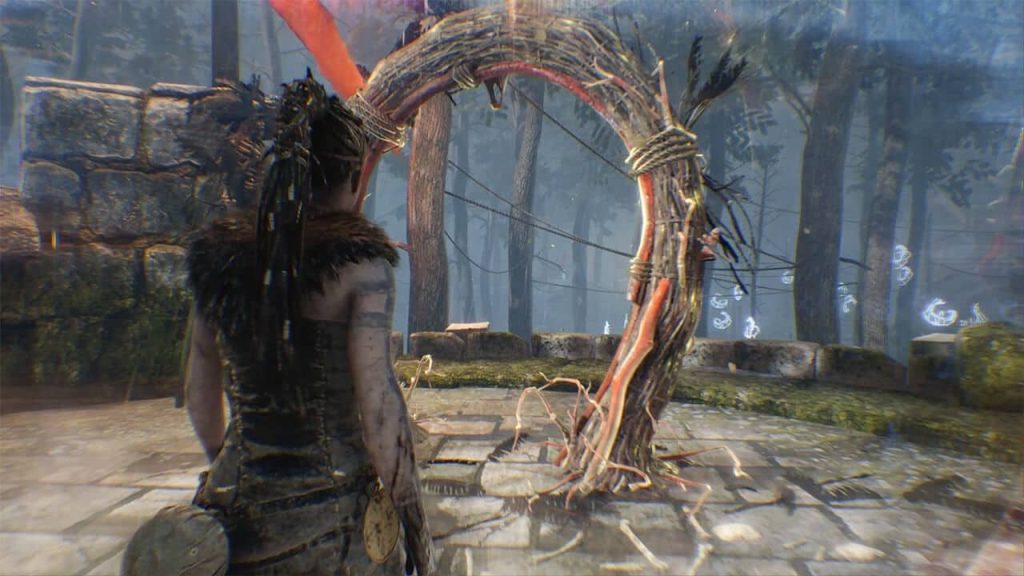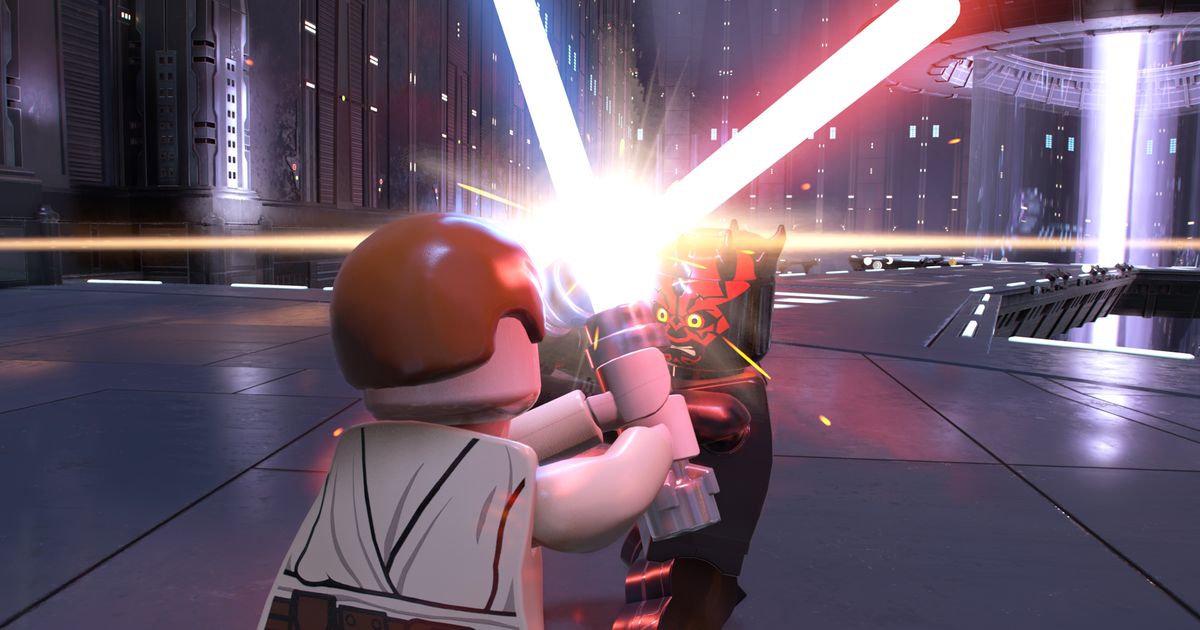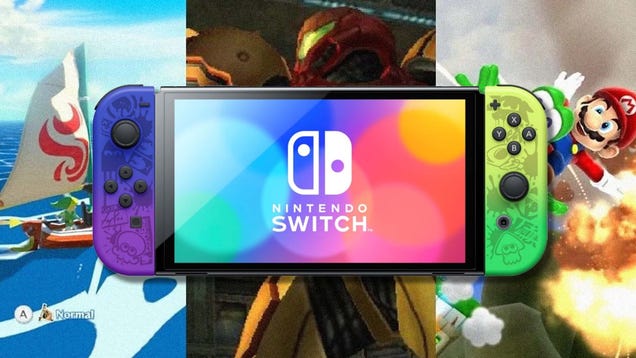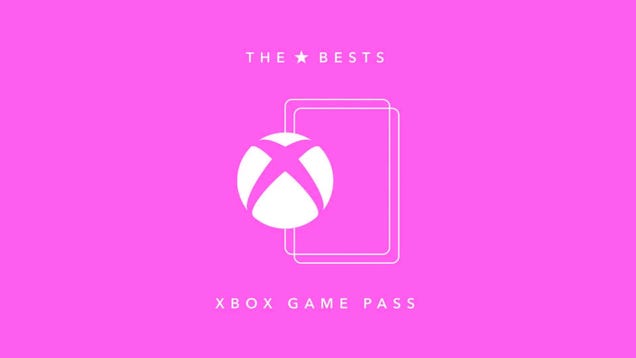Title: Hellblade: Senua’s Sacrifice
Type of Game: Action-Adventure, Psychological Horror
Developer: Ninja Theory
Publisher: Ninja Theory
Released: August 8, 2017
Platforms Available: PC, PlayStation 4, Xbox One, Nintendo Switch, PlayStation 5, Xbox Series X/S
Platform Reviewed: PlayStation 4
Level of Maturity: Mature 16+
Reading Time: 10 minutes
The Psychotic Ballet of Senua
Face painted with battle paint, anger, and determination in her eyes. But don’t be fooled. Senua, the protagonist of Ninja Theory’s Massacre, not only uses war paint to show her will to kill, but she’s also probably trying to hide her darkness and banish the whispering demons behind it, in vain. Hellblade is, in fact, a properly psychotic action flick where you’re never sure if there’s a real threat after your neck or the fruits of the main character’s twisted mind. Anyone expecting pure carnage along the lines of Devil May Cry, however, would be mistaken. Of course, you’ll see situations where soul-searching goes by the wayside and swords stabbed into heads come into play, too. Still, Hellblade certainly can’t claim to be classic action-packed fare. It is more of a psychological study. Hellblade is a ballad of madness dressed up in a damn engaging coat that occasionally strays into the field of unadulterated horror.
Descent into Norse Hell: Through Senua’s Psyche
Senua ventures into the underworld of Norse mythology to save a beloved soul. The apparent main storyline, however, is a background melody to the whole orchestra. Instead, the story is more about dealing with one’s own fears, struggling with fading mental health, and reflecting on how incredibly little it takes for the human mind to slip into a spiral of hopelessness and damnation. In other words, the main storyline here is Senua herself. But when the entire play hinges on the solo performance of a single character, a girl who has been seeing into other worlds since she was a little girl (and it’s not a pretty sight), she needs special attention. And that’s precisely what the creators have done. The foundation is an incredibly detailed and elaborate model that must have been created by someone who was perhaps born with a manual in hand. On top of that, add facial expressions that even the guys from Naughty Dog would be ashamed of with their Uncharted 4 or The Last of Us Part II, games that can rightly be considered the definition of technical excellence in the gaming industry for their time.
No need to mention further the incredible Red Dead Redemption 2 (incidentally, a few days ago, we released a gallery of my last playthrough of this beautiful game), but back to the point of why we’re here before I start going into detail and my review of a Nordic adventure becomes an essay on the wild west…
Melina Juergens: The Virtuoso of Madness
But all of this would have been a dead “primer” for Hellblade if the heroine hadn’t been breathed life into in a riveting way by Melina Juergens. She may have worked as a video editor at Ninja Theory during the game’s development. Still, after playing Hellblade, one can’t help wondering if she’s accidentally missed her calling. Senua transforms into a completely believable, authentic human being through her performance. It’s very hard not to like her, not to sympathize with her, not to experience her hardships. It’s no surprise that most of the story’s cutscenes focus on Senua, occupying her from different angles and giving space to Melina’s acting, but that’s not a criticism, quite the opposite. Having managed to create such an exciting and beautiful character, it would be an eternal shame not to put her to such great use. Ninja Theory could write textbooks on handling mental illness, translating it into atmosphere, game design, and gameplay elements. They’ve succeeded like few before. The intense yet icy fear that paralyzes life, the voices of non-existent beings that you can hear through Senua, the visual depiction of real psychotic hallucinations that the developers worked with psychiatrists and sick people to create – all of this uniquely intersects on screen, delivering an oppressive and compelling experience. The developers recommend playing with headphones, which I can’t help but agree on my part, as the game very often works with 3D sound.
The Art of Psychological Environments
Overall – the setting, mood, atmosphere, and craftsmanship are phenomenal. For these positives alone, the game deserves an honest recommendation. Think back to Devil May Cry – especially in the later levels, the developers made it clear that they are downright good at psychological environments. In moments when you’re not sneaking around with your heart in your pants with some fictional vision, the game serves up a fairly classic pattern of alternating action passages and puzzles with the environment. While the puzzles aren’t particularly complex, they often build to some enjoyable punchlines by working with alternating worlds, adjusting reality before your eyes, and finding the hidden shapes of Norse runes. They may not wholly satisfy avid solvers, but they give you a better view of the beautiful setting, and that is the point.
The Paradox of Beautiful yet Shallow Combat
And then it comes to action. The pulsing Darkness materializes in the form of warrior spirits. The semi-demonic Vikings are properly terrifying and formidable to behold, in short, enemies as they should be. You’ll gather up the fragile remnants of your and Senua’s courage and go out to meet them… …and they’re grabbing at you like straw men. That’s really the only complaint I have with the game. The fights are technically well played, no doubt about it. Everything is slick and smooth; the sword dance moves build on each other like a real ballet, and Senua goes from offense to defense and back with lightning grace, quickly but naturally. Inner voices warn fearfully of a blow going to the back, scream in pain and fear when an enemy knocks you down, and so on. The battles, by the way, like the whole game, are an audiovisual feast. They’re too simple and straightforward in terms of gameplay. The combat system, while visually stunning, needs more depth and complexity than many action-adventure games offer, which may disappoint some players.
Atmosphere of Local Nord
The desire not to hurt the carefully built atmosphere, not to pull the player immersed in the local world back above the surface, is apparent. You won’t find any interface here at all, as it could be distracting. The absence of auxiliary indicators may be the reason why the developers didn’t want to go overboard with the difficulty, only that they managed the opposite extreme. Most of the battles can be solved by pressing a single attack and the occasional dodge, during which Senua is invulnerable, so it doesn’t matter which side you perform it on. The pinnacle of the tactic is to kick the enemy with your shield first before you start slashing furiously with your sword. The icing on the cake of the whole negative side of things is then put on by the unnecessarily overpowered focus mode, which stops time, is virtually impossible to die in, charges excessively fast, and takes far too long. The combat system offers more combos and attacks than one might initially think. There’s no list or explanations, so you’ll have to figure them out on your own, but the bottom line is that you can spice up the fight with your own efforts. Combine lunges as much as possible, even though it’s not really necessary, deliberately not using slow motion, and so on. The battles are then pure bliss to look at and listen to; the enjoyment of the dynamics and rhythm of the battle dance is great but lacking in adrenaline. The joy of victory. Tactical depth. This is best illustrated by the fact that I first played through the game on the medium difficulty it offers and rarely managed to die during combat.
The Guttural Symphony: When Music Trumps Gameplay
On the other hand, there would be honorable exceptions where the combat would cause goosebumps. These are not so much the fault of the game design, however, but the music. For a few of the more important conflicts are accompanied by guttural Nordic folk that whip up the already immense sensory pleasure to an unreal level. It’s still a triumph of form over content, but if you like, say, Wardrun, add a point to your rating. And speaking of numbers – to have Hellblade’s complexity, difficulty, and variety of combat system from, say, the oft-mentioned DmC, it would be somewhere between a nine and a ten for everyone else without blinking an eye.
Technological Triumph on Aging Hardware
Technically, the game is in order. On the basic PlayStation 4 FAT model, it consistently maintained 30 frames per second, which is admirable given the game’s high level of detail, and the developers have clearly put effort into optimization, something that not everyone can claim for many years. Furthermore, I encountered a few minor bugs, but nothing worth mentioning, as they occurred so rarely that it’s easy to simply wave them off.
Simplicity and Brilliance
Before the final verdict, I’d quickly return to the mentioned perhaps too simple combat. Don’t take it so badly from me. Despite the reservations about the visually beautiful but easy and not very deep battles, I thoroughly enjoyed the game from the first seconds to the final credits (which lasted about eight hours). This is mainly thanks to the excellent atmosphere, environment, and absolutely unrivaled handling of the theme. The whole experience is then enhanced by audiovisual beauty and a character so excellently crafted (both in appearance and internally) that one’s jaw drops effortlessly. Hellblade is an excellent, emotionally charged poem about real and imagined darkness inside people. Unique, fresh, beautiful, and terrifying. Play it. I recommend it.
End of Psycho Nord
Norse mythology mixed with a ticket to human madness provides the basis for the creation of a dark, captivating mood. The game stands on exploring fear, anxiety, and on an amazing main character, or rather the excellent acting performance of her portrayer. The sophistication and depth of the combat system lags a bit, but the rest of the game is an unconventional delight that is definitely worth buying, which cannot be said about the sequel that only repeated already used, albeit once good ideas with minimal innovations. However, you can read more about that in my previous review of that second part.
Where to Buy Hellblade: Senua’s Sacrifice
Steam (PC): Available for $29.99. You can purchase it directly from Steam.
Xbox Store (Xbox One, Xbox Series X/S): Available for $2.99 now, but normaly 29.99. Or included in Game Pass. Check it out on the Xbox Store.
Nintendo Shop (Switch): Available for $29.99. Purchase it from the Nintendo Shop.
PlayStation Store (PS4, PS5): Available for $29.99. You can find it on the PlayStation Store.
Official Page: Visit the official Hellblade: Senua’s Sacrifice page for more information.
Subreddit: Join the discussion on the Hellblade Subreddit.
The post Hellblade: Senua’s Sacrifice – Excellent Nordic Nightmare appeared first on WePlayGames.net: Home for Top Gamers.








